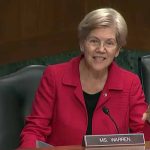Americans who are already facing some money trouble are more intensive users of “Buy Now, Pay Later” offerings, with the majority of them tapping the short-term installment payment programs five or more times a year, according to new research released Wednesday by the Federal Reserve Bank of New York.
“Financially fragile” individuals — those who have a credit score under 620 or were declined for a credit application or fell delinquent on a loan in the past year — are more than three times as likely as other, more financially stable, individuals to use BNPL multiple times a year, New York Fed researchers wrote Wednesday in a Liberty Street Economics blog post.
Last fall, New York Fed researchers found that people experiencing financial difficulties and those with the greatest unmet credit needs were the largest users of BNPL programs, accounting for nearly one-third of the overall user base.
The latest update released Wednesday drew on consumer survey data collected in October (before the spendy holiday season) and was focused on the intensity of BNPL usage.
Researchers found that almost 60% of financially fragile BNPL consumers have used the installment offerings five or more times a year, with nearly 30% conducting 10 or more BNPL transactions annually. That compares to just over 20% and 10%, respectively, for more financially stable users.
“More-fragile households tend to use the service to make frequent, relatively small, purchases that they might have trouble affording otherwise,” researchers wrote in the post.
More than 62% of financially fragile BNPL consumers used the programs for purchases under $250, compared to 43.6% of others, according to New York Fed data. However, those who are more financially stable use BNPL to make larger purchases.
They found that 17.3% of financially stable BNPL users financed a purchase between $1,750 and $2,000, versus 4.9% of financially fragile consumers.
Buy Now, Pay Later offerings have exploded in use and availability in recent years, allowing people to make (often short-term) installment payments on furniture, travel, concert tickets, food delivery and even at the grocery store.
BNPL providers say their offerings can be a safer and more sustainable alternative to traditional lines of credit and can allow people to “smooth out” some transactions to better meet their budgets.
Economists, attorneys general and consumer advocates have raised concerns about BNPL, noting that a lack of data, transparency and formal regulations make it difficult to know and track just how much additional debt consumers are incurring.
“BNPL could lead to an increase in consumer debt, as consumers may be more likely to take on additional debt if they know they can spread out the payments,” Wells Fargo economists wrote in December 2023, when BNPL use was booming during the holidays. “Because no central repository exists for monitoring it, growth of this ‘phantom debt’ could imply total household debt levels are actually higher than traditional measures (reported by the Federal Reserve.)”
Some of the greatest downside risks for consumers are when they stack multiple BNPL loans and then pay for those programs with a credit card, economists and researchers have previously told CNN.
New York Fed researchers said Wednesday that their latest findings provide further evidence that not only is BNPL more attractive to people who’d have a harder time obtaining credit but also that the first time someone uses one of these installment loans, it’s not likely to be the last.
“Across levels of financial stability, it is rare for people to use BNPL just once,” New York Fed researchers wrote. “Indeed, about 72% of financially stable users and 89% of financially fragile users have made multiple BNPL purchases over the past 12 months.”
Read the full article here




